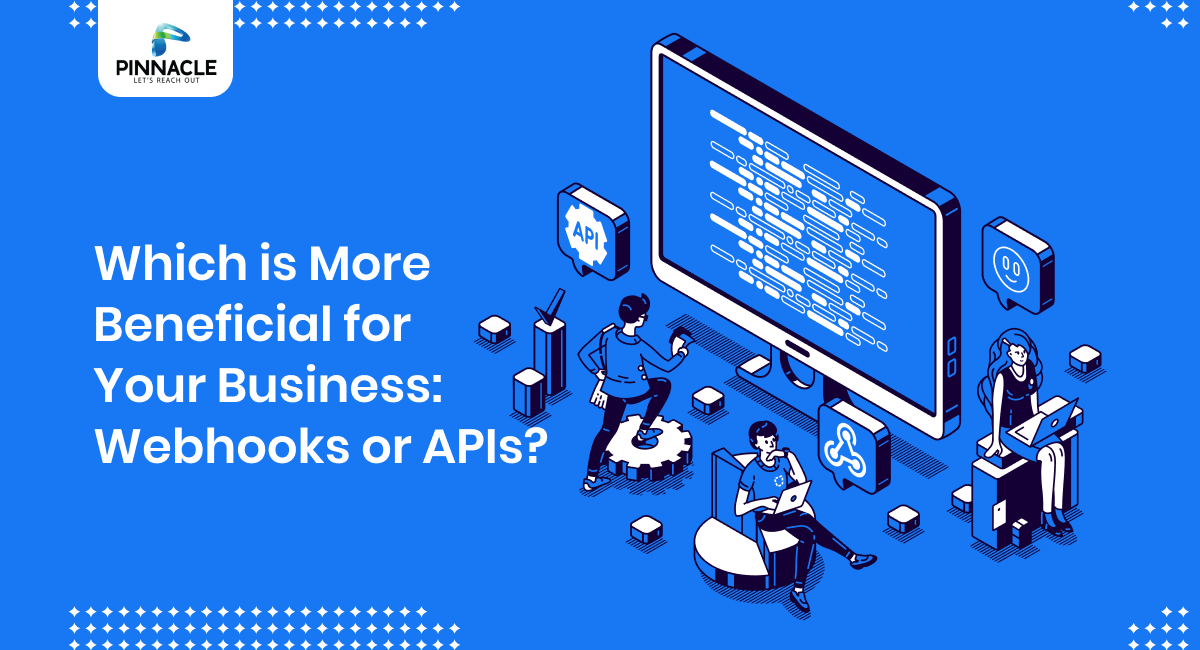In this article, we will explore the advantages of using both APIs and Webhooks in the integration process. We will also compare their different functionalities and help businesses decide which one is right for their needs.
Application Programming Interface is referred to as API. It is a collection of regulations or instructions that enables programmers to create apps that communicate with an API. Developers and independent contractors can link their services to other businesses’ products via an API.
Webhooks are used to alert another service when something occurs in their system. Similar to a “push notification” from Facebook, Slack, or any other application, a Webhook sends data and events to another service automatically.
Application programming interfaces (APIs) are regarded as a best practice for firms in today’s hyper connected industry that seek to get data visibility and easily grow their tech stacks. This is so because APIs provide several advantages for businesses and IT teams of all sizes. In addition to being pre-packaged, pre-built, and extremely scalable, they also enable quick cooperation across third-party apps, programs, and platforms, which leads to quicker innovation and better commercial outcomes.
In the realm of APIs, Webhooks are the newest trending subject. Webhooks are notifications sent to a program when anything happens in another program or service. Without having to build new code from the start, this enables developers to design apps that are more robust and have more features.
“Ask, & you shall get” is the core idea governing APIs. Consider an API as a software component or code that enables a two-way, direct link between multiple apps, enabling them to exchange and sync data.
For example, assume an organization is utilizing communication APIs to link their communication system to their customer relationships management (CRM) platform, such as Zendesk or Salesforce. Or maybe they want to connect to a chat app, such as WhatsApp or Facebook Messenger, so they are able to send messages to their clients right from their CRM interface.
In order to obtain fresh customer communications, the API will first have to ask the chat app, whether there is any new data? From usability evaluation point of view, this is commonly triggered by a “Update” or “Try and recover New Messages” button or equivalent function. If there is fresh data, the chat app will transmit it across over the API to the organizations CRM system. Simply explained, APIs function on a request basis—all types of data interchange are only activated when a request is made.
Webhooks, on the contrary, constantly push fresh data without the requirement for an explicit instruction. This is the reason Webhooks are typically advised for reducing superfluous complexity and streamlining operations. Consider the scenario above. Using a Webhook rather than an API will enable the chat app to regularly check for incoming messages, and then actively transmit them over to the organizations CRM platform.
To design a system that transmits and gets the relevant data at the correct time, it is vital to utilise both Webhooks and APIs. Webhooks support API-based collaboration to create more feature-rich apps, resulting in improved consumer experience and workflow efficiency.
When selecting between utilising an API or a Webhook in a certain situation, it all comes down to what type of data is being shared. If a company is seeking for something as basic as a status update, Webhooks are a terrific answer, but if they require response-based capability, then APIs continue to be the way to go. That’s why APIs are important in online transactions or trip booking applications, or any mechanism that demands a client response.


